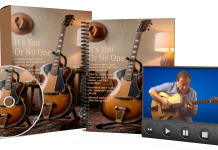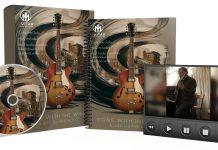This post may contain affiliate links. As an Amazon associate, Google associate as well as associate for other programs, Guitar & Music Institute may earn commissions from qualifying purchases.
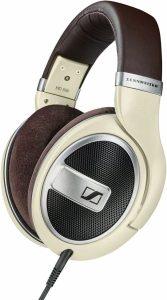 Studio headphones are an essential tool for musicians, producers, and audio engineers. Whether you’re recording, mixing, or mastering, having a reliable pair of studio headphones can make all the difference in the quality and accuracy of your work. In today’s fast-paced world of technology, the market is flooded with various options, making it difficult to pinpoint the best studio headphones for your needs.
Studio headphones are an essential tool for musicians, producers, and audio engineers. Whether you’re recording, mixing, or mastering, having a reliable pair of studio headphones can make all the difference in the quality and accuracy of your work. In today’s fast-paced world of technology, the market is flooded with various options, making it difficult to pinpoint the best studio headphones for your needs.
Fortunately, we’ve done the research for you and compiled a list of the top 5 studio headphones in 2024. These headphones are not only highly regarded by professionals in the industry but also offer exceptional sound quality, comfort, durability, and value for money. If you’re serious about producing top-notch music, read on to discover the best studio headphones that will take your audio production to new heights.
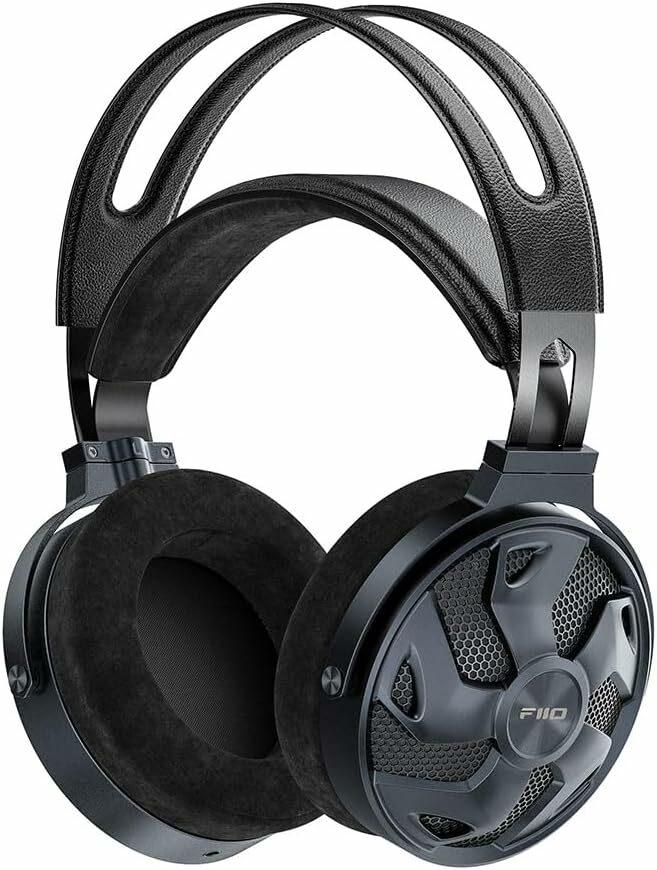
The FiiO FT3 HiFi Studio 32ohm Wired Over-Ear/Open-Back Headphone is an excellent choice for audiophiles and those seeking a great-sounding headset. With its 60mm high-performance dynamic driver, this headphone delivers outstanding audio quality and clarity. The open-back design allows for a more spacious soundstage, making it ideal for immersive listening experiences.
One of the standout features of the FT3 is its versatility. It comes with three different cable options, including 3.5mmSE, 4.4mm, and 6.35mm, ensuring compatibility with a wide range of audio devices. The 32ohm impedance ensures efficient power delivery and makes it easy to drive these headphones without the need for an external amplifier.
Overall, the FiiO FT3 HiFi Studio 32ohm Wired Over-Ear/Open-Back Headphone impresses with its exceptional sound quality and convenient cable options. It is a reliable and high-performing headset that is well-suited for both audiophiles and casual listeners alike.
Excellent sound quality
Lots of cable connectors included
Swappable cable
Detachable cable with silver-plated copper wires included
Excellent for gaming
Bulky and heavy
Cumbersome size
Size: 11.4 x 9.8 x 5.7 inches
Weight: 4.01 pounds
Freq. Response Range: 7Hz-40kHz
Impedance: 32Ω
Technology: Wired
Driver diameter: 60mm
Material: LCP aluminum metal
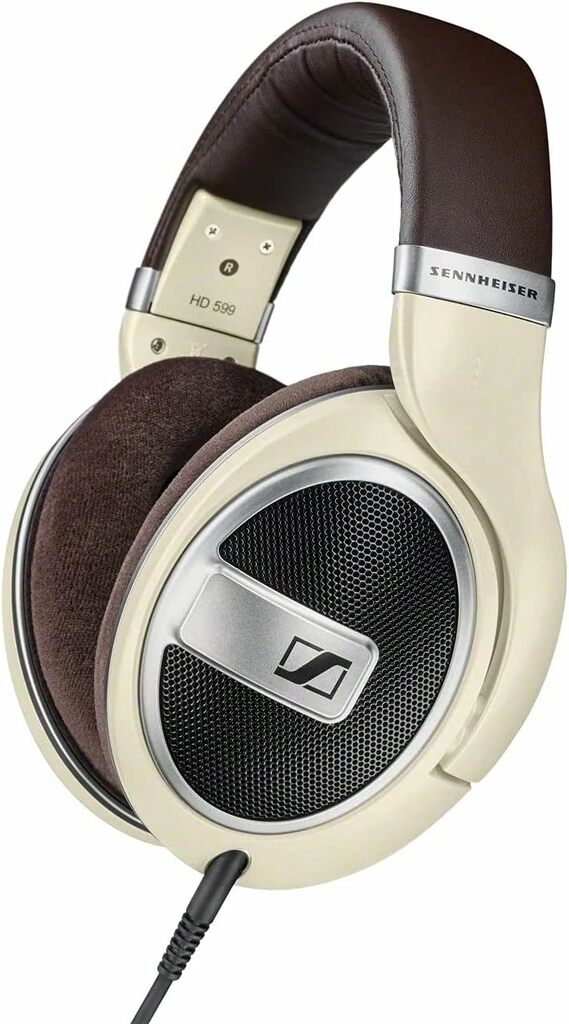
The best open-back headphones under $200
Sennheiser Open Back Headphone HD 599
The Sennheiser Consumer Audio HD 599 Open Back Headphone in Ivory is a top-notch product in the world of over-ear headphones. Designed by the renowned brand Sennheiser, these headphones offer an unparalleled audio experience. With their open-back design, these headphones provide a spacious and detailed soundstage, allowing the listener to fully immerse themselves in their favorite music. The ivory color adds an elegant touch to the overall aesthetic of the headphones, making them even more attractive. Additionally, the comfortable fit and high-quality materials ensure long-lasting durability and enjoyable listening sessions. Overall, the Sennheiser HD 599 Open Back Headphone is a must-have for audiophiles seeking an exceptional audio experience.
Audiophile sound quality
Comfortable for long listening sessions
Good balance of sound quality and comfort
Impressive soundstage
Bulky design not meant for outdoor use
Technology: Wired
Design: Audiophile sound, Luxury
Detachable cable: 3.0m, 1.2m
Coils: Aluminums
Style: Classic (Timeless)
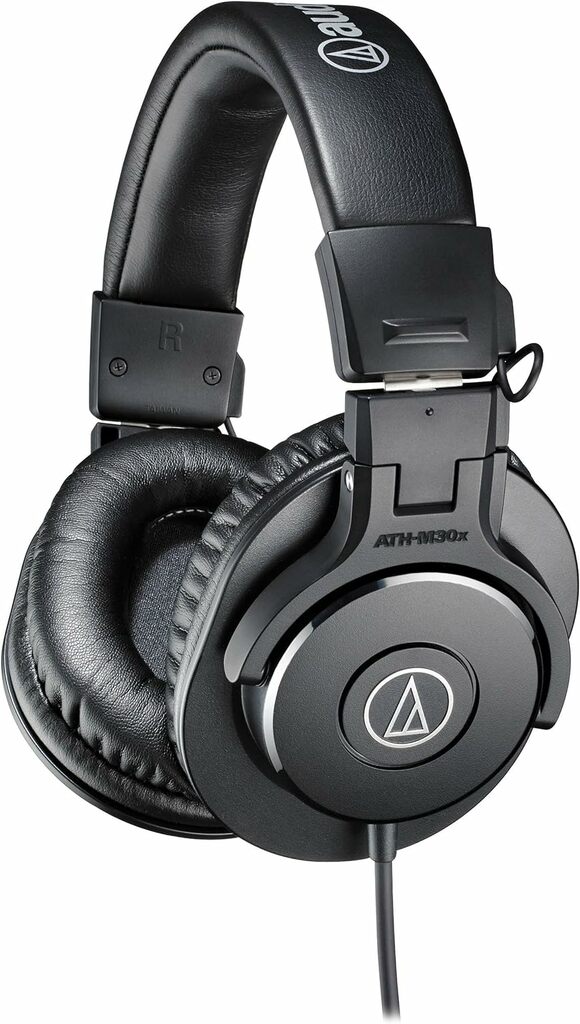
The best cheap over-ear headphones
Audio-Technica STUDIO HEADPHONES
The Audio-Technica ATH-M30x Professional Studio Monitor Headphones in black are a fantastic choice for those in need of high-performance over-ear headphones. With their sleek and professional design, these headphones deliver excellent sound quality and comfort. The closed-back design ensures that the sound is isolated, allowing the user to fully immerse themselves in their music or audio. The ATH-M30x headphones also feature a collapsible design which makes them easy to carry around. With their durability, affordability, and impressive audio performance, these headphones are a great option for any music lover or professional in need of reliable studio monitor headphones.
Good audio quality
Excellent audio quality for the price
Excellent sound quality for price
Great sound quality for the price
Short 3-ft cable
Non-detachable cable
Weight: 7.8 Ounces
Model: ATH-M30x
Connector: 3.5mm Jack
Design: Over Ear
Feature: Excellent sound isolation
Size: 11.4 x 10 x 4.1 inches
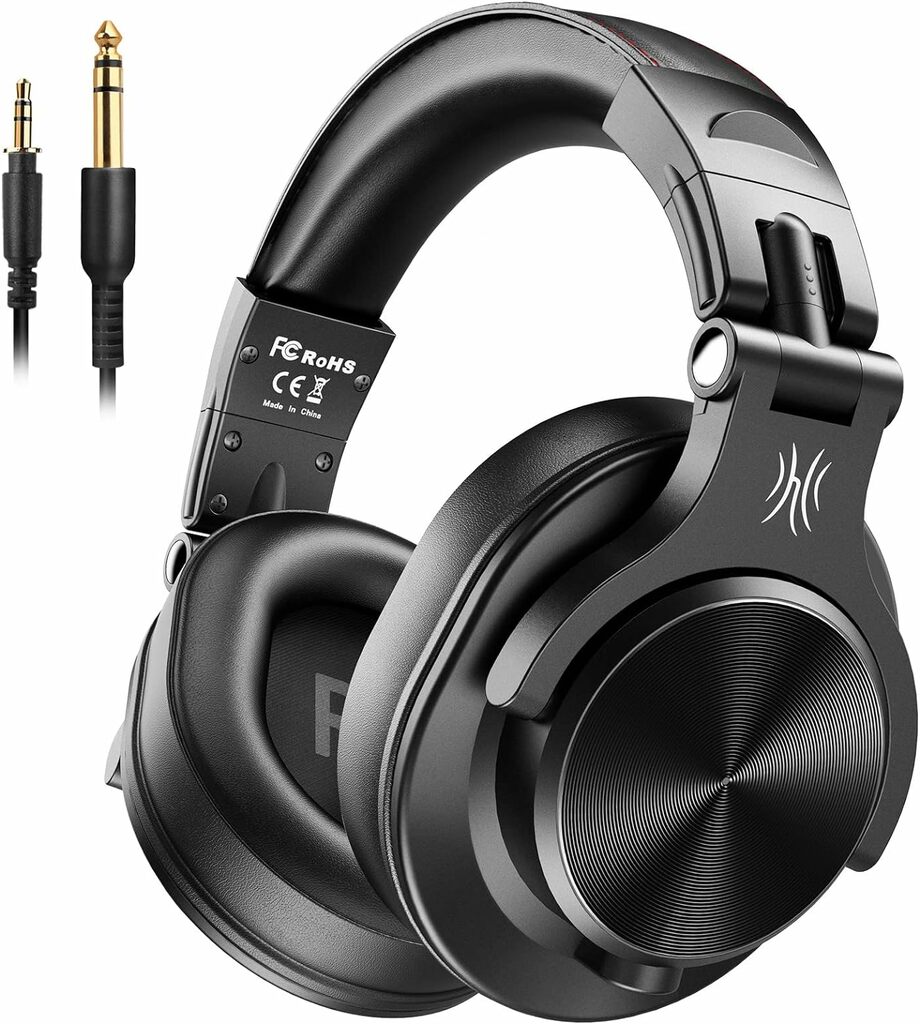
Worth a 2nd Look
OneOdio DJ Headphones
The OneOdio A70 Bluetooth Over Ear Headphones are a must-have for any DJ or music enthusiast. With a sleek black design and a comfortable fit, these headphones deliver superb sound quality and impressive features. The 72-hour playtime ensures you will never be without your music, while the Hi-Res audio provides crystal clear sound for the ultimate listening experience.
The versatility of the A70 is also worth noting. It comes with a 3.5mm/6.35mm wired audio jack, allowing you to connect it to studio monitors, mixing DJ guitar amps, computers, laptops, PCs, and tablets. This makes it perfect for both professional use in the studio and casual listening at home. Overall, the OneOdio A70 Bluetooth Over Ear Headphones are a fantastic choice for DJs and music lovers alike, offering exceptional sound quality, long battery life, and compatibility with various devices.
Comfortable with glasses
Comfortable to wear for extended periods
72 hours of battery life
Excellent battery life
Foldable design with carrying pouch included
Mediocre microphone
Bulky size makes them less portable
Weight: 8.96 ounces
Charging: 72 Hours
Cable: 3.5mm/6.35mm
Model Name: A70
Power: 1 Li-Pol
Technology: Wireless
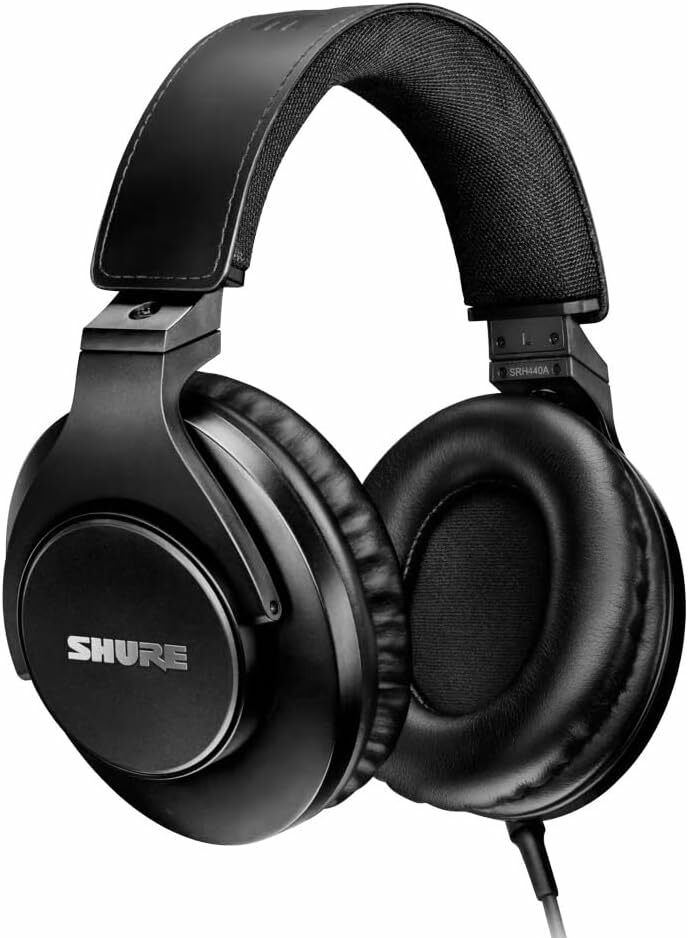
The best budget studio headphones
Shure SRH440A Over-Ear Headphones
The Shure SRH440A Over-Ear Wired Headphones are a must-have for professionals in the music industry. With their professional studio-grade quality, these headphones are perfect for monitoring and recording. The enhanced frequency response ensures exceptional audio reproduction, allowing users to hear every detail in their music.
What sets these headphones apart is their versatility. They are compatible with all audio devices, making them an excellent choice for musicians, sound engineers, and audio enthusiasts alike. The adjustable and collapsible design adds to their convenience, allowing for easy storage and portability. The 2022 version of the Shure SRH440A headphones truly deliver outstanding sound quality and functionality, making them a worthwhile investment for anyone serious about their audio experience.
Great for recordings
Great for monitoring, recording
Adjustable headband offers better comfort
Good passive isolation
Collapsible design
Non-detachable cable
Earpad material could be better
Weight: 9.01 ounces
Wire type: Wired
Wireless: No
Design: Adjustable & Collapsible
Jack type: 3.5mm
Frequency Response: Enhanced
What are studio headphones?
Studio headphones, also known as monitoring headphones, are a crucial tool for those involved in audio production, particularly in professional studio settings. These specialized headphones are designed to provide accurate and detailed sound reproduction, enabling producers, engineers, and musicians to make informed decisions about their recording and mixing choices.
Unlike standard headphones, studio headphones are meticulously designed to offer a flat frequency response. This means that they reproduce audio as accurately as possible, with minimal coloration or exaggeration of certain frequencies. This precision allows users to hear the sound exactly as it was recorded, making it easier to detect subtle nuances, flaws, or imperfections in a mix.
One of the key features of studio headphones is their ability to provide excellent sound isolation. This means that they block out external noise and prevent sound leakage, allowing the user to focus solely on the audio being played through the headphones. This is particularly important when recording vocals or instruments, as it helps in capturing clean and undisturbed tracks.
Another essential characteristic of studio headphones is their durability and comfort. As these headphones are designed for prolonged use in professional environments, they are built to withstand the demands of regular studio sessions. Additionally, they are designed to be comfortable for extended periods, featuring soft padding and adjustable headbands that reduce listener fatigue.
Overall, studio headphones play a significant role in the production process, providing professionals with a tool that helps them create high-quality recordings and mixes. Whether you are an audio engineer, producer, musician, or simply a music enthusiast interested in experiencing music in its purest form, studio headphones are an invaluable investment.
Do I need studio headphones?
If you are a music enthusiast looking to take your listening experience to the next level, studio headphones might be just what you need. These specialized headphones are designed to provide a high level of accuracy and detail, allowing you to hear every note and nuance in your favorite tracks. Whether you are an aspiring musician, a producer, or simply someone who appreciates high-quality sound, studio headphones can greatly enhance your listening pleasure.
One of the key advantages of studio headphones is their ability to reproduce sound with exceptional clarity. Unlike regular consumer headphones, studio headphones are designed to deliver a flat frequency response, meaning they don’t add any extra coloration to the sound. This allows you to hear the music exactly as it was intended to be heard, with no added bass or treble boost that can distort the original audio. For musicians and producers, this accuracy is crucial for recording and mixing music, as it allows them to make precise adjustments without any coloration or bias.
In addition to their accurate sound reproduction, studio headphones also tend to be more durable and comfortable than regular headphones. They are often built with high-quality materials that can withstand the rigors of professional use, and they are designed to provide long-lasting comfort, even during extended listening sessions. This is especially important if you are planning to use your headphones for hours on end, whether it’s for studio work or simply enjoying your favorite albums.
While studio headphones may come at a higher price point compared to regular headphones, the investment can be well worth it for serious music enthusiasts. These headphones offer a level of audio quality and accuracy that simply cannot be matched by consumer-grade headphones. Whether you are a musician, producer, or someone who appreciates high-fidelity sound, studio headphones can elevate your listening experience to new heights. So, if you’re looking for the ultimate audio experience, it might be time to consider investing in a pair of studio headphones.
Open back or closed back?
Open back headphones are known for their spacious and natural sound reproduction. The open design allows air to flow through the ear cups, resulting in a wider soundstage and a more immersive listening experience. This makes them a great choice for mixing and mastering, as they provide a more accurate representation of your audio. Additionally, open back headphones are typically more comfortable to wear for long periods of time, as the open design reduces heat and pressure buildup.
On the other hand, closed back headphones are known for their isolation and strong bass response. The closed design helps to block out external noise and prevents sound leakage, making them ideal for recording and tracking in noisy environments. The tight seal of closed back headphones also enhances the bass frequencies, which can be appealing for music genres that rely heavily on low-end presence. However, the closed design may cause your ears to heat up over time and can feel more fatiguing compared to open back headphones.
Ultimately, the choice between open back and closed back studio headphones depends on how you plan to use them and the specific sound characteristics you’re looking for. If you prioritize accuracy and a wider soundstage, open back headphones may be the way to go. On the other hand, if isolation and strong bass response are more important to you, closed back headphones may be the better option. It’s always a good idea to try out different models and see which one suits your needs and preference the best.
What’s the difference between open-back and closed-back headphones?
First, let’s talk about closed-back headphones. These are the more common type of headphones you’ll see people using on a daily basis. Closed-back headphones feature a solid outer shell that completely encloses the ear cups, preventing sound leakage in and out of the headphones. This design provides excellent noise isolation, making it a popular choice for those who want to enjoy their music without any external distractions.
On the other hand, open-back headphones offer a different listening experience. As the name suggests, open-back headphones have perforations or vents on the outer shell, allowing sound to escape. This design creates a spacious and natural sound stage, giving you a more immersive listening experience. Open-back headphones are often favored by audiophiles and professionals, as they offer a more accurate and detailed sound reproduction.
While closed-back headphones are commonly used in the studio for their noise isolation, open-back headphones have their place as well. In a studio setting, open-back headphones are often used for critical listening tasks, as they can provide more accurate sound representation.
The choice between open-back and closed-back headphones ultimately depends on your personal preferences and needs. Closed-back headphones are great for portable use and blocking out external noise, while open-back headphones excel in providing a more natural and accurate sound reproduction. Studio headphones come in both open-back and closed-back designs, giving professionals the option to choose based on their specific tasks. So, whether you’re a casual listener or a professional in the music industry, understanding the difference between these types of headphones can help you choose the perfect pair.
Is wired or wireless better?
When it comes to choosing between wired or wireless technology, the debate is fierce. For audio enthusiasts, especially those using studio headphones, the decision can be even more crucial. The question arises: is wired or wireless better?
Wired headphones have been the industry standard for decades, and there are plenty of reasons why they continue to be favored. They provide a consistent and uninterrupted sound quality, ensuring that every detail of the music is heard exactly as intended. With no need for battery power or signal strength, wired headphones offer a reliable connection that won’t let you down in the middle of your jam session or work.
On the other hand, wireless headphones have their own set of advantages. With the absence of cables, they offer unmatched freedom of movement, allowing you to move around without getting tangled up. Whether you’re working out or just enjoying your music on the go, wireless headphones provide convenience and flexibility. Additionally, advances in technology have significantly improved the audio quality of wireless headphones, making them a viable option for those seeking high fidelity sound.
Ultimately, the choice between wired and wireless headphones depends on your personal preferences and needs. If audio quality and stability are your top priorities, wired headphones are a safe bet. However, if you value convenience, portability, and the freedom to move around without restrictions, wireless headphones might be the better option for you. Regardless of your choice, the market offers a wide range of studio headphones in both wired and wireless options, ensuring that you can find the perfect solution to suit your listening preferences.
Studio headphones vs consumer
Consumer headphones are designed for everyday use by the general public. Their primary objective is to deliver an enjoyable listening experience. Consumer headphones often prioritize bass enhancement and other frequency boosts to cater to popular music preferences and provide a more immersive sound experience. While this may enhance the enjoyment of listening to music, it can compromise the accuracy and detail of the sound reproduction.
When choosing between studio headphones and consumer headphones, it ultimately boils down to personal preferences and priorities. If you’re a music professional or an audio enthusiast who values precision and accuracy, studio headphones are the way to go. On the other hand, if you’re an average listener who prioritizes a more engaging and enjoyable sound experience, consumer headphones will likely be more suitable. Whichever you choose, investing in a high-quality pair of headphones is essential to fully appreciate the music you love.
What other features should I look for in studio headphones?
Firstly, it’s crucial to consider the frequency response of the headphones. Studio headphones with a wide frequency range will ensure that you can hear every detail and nuance in your audio recordings. Look for headphones that have a frequency response between 20Hz to 20kHz for accurate and balanced sound reproduction.
Another important feature to consider is the impedance of the headphones. Studio headphones with a higher impedance rating require more power to drive them, resulting in better clarity and sound quality. Aim for headphones with an impedance rating of at least 32 ohms or higher for optimal performance.
Comfort is also a key factor when selecting studio headphones. Look for headphones with adjustable headbands and plush ear cushions that provide a comfortable fit, even during long recording or mixing sessions. Additionally, consider the weight of the headphones, as heavier models may cause discomfort over time.
Lastly, it’s worth considering the durability and build quality of the studio headphones. Look for headphones that are constructed from sturdy materials and have a robust design. This will ensure that they can withstand the rigors of studio use and last for years to come.
In conclusion, when searching for studio headphones, be sure to consider factors such as frequency response, impedance, comfort, and durability. By paying attention to these features, you can find a pair of headphones that will provide accurate sound reproduction, a comfortable fit, and long-lasting performance for all your audio recording and mixing needs.
Should I buy used studio headphones?
One of the main advantages of buying used studio headphones is the cost. Used headphones are typically much more affordable than their brand new counterparts, allowing you to save a significant amount of money. This could be particularly beneficial if you are on a tight budget or just starting out in the industry.
Another advantage is that used studio headphones often come with a history. Many musicians and producers take great care of their gear, so used headphones may still be in excellent condition. You might even find a pair that has been lightly used or well-maintained, giving you a high-quality product at a lower price point.
However, it is essential to be cautious when purchasing used studio headphones. Make sure to thoroughly research the model and brand, and if possible, try them out before making a decision. Check for any signs of wear and tear, especially in the cables and ear cushions. Additionally, consider if the seller offers any guarantees or return policies.
In conclusion, buying used studio headphones can be a viable option for those looking to save money without compromising on quality. With proper research and careful examination of the product, you can find a pair that meets your needs and fits your budget. Whether you decide to go for new or used, the most crucial factor is finding headphones that deliver accurate sound reproduction and comfort during long studio sessions.
This post may contain affiliate links. As an Amazon associate, Google associate as well as associate for other programs, Guitar & Music Institute may earn commissions from qualifying purchases.



